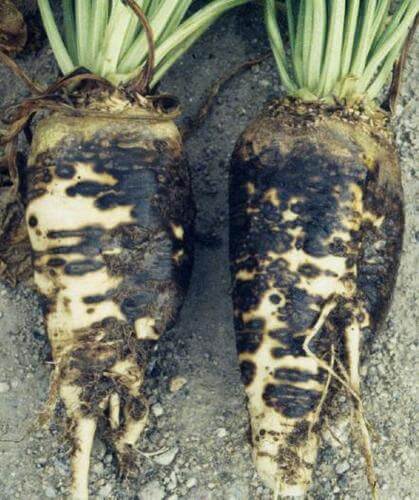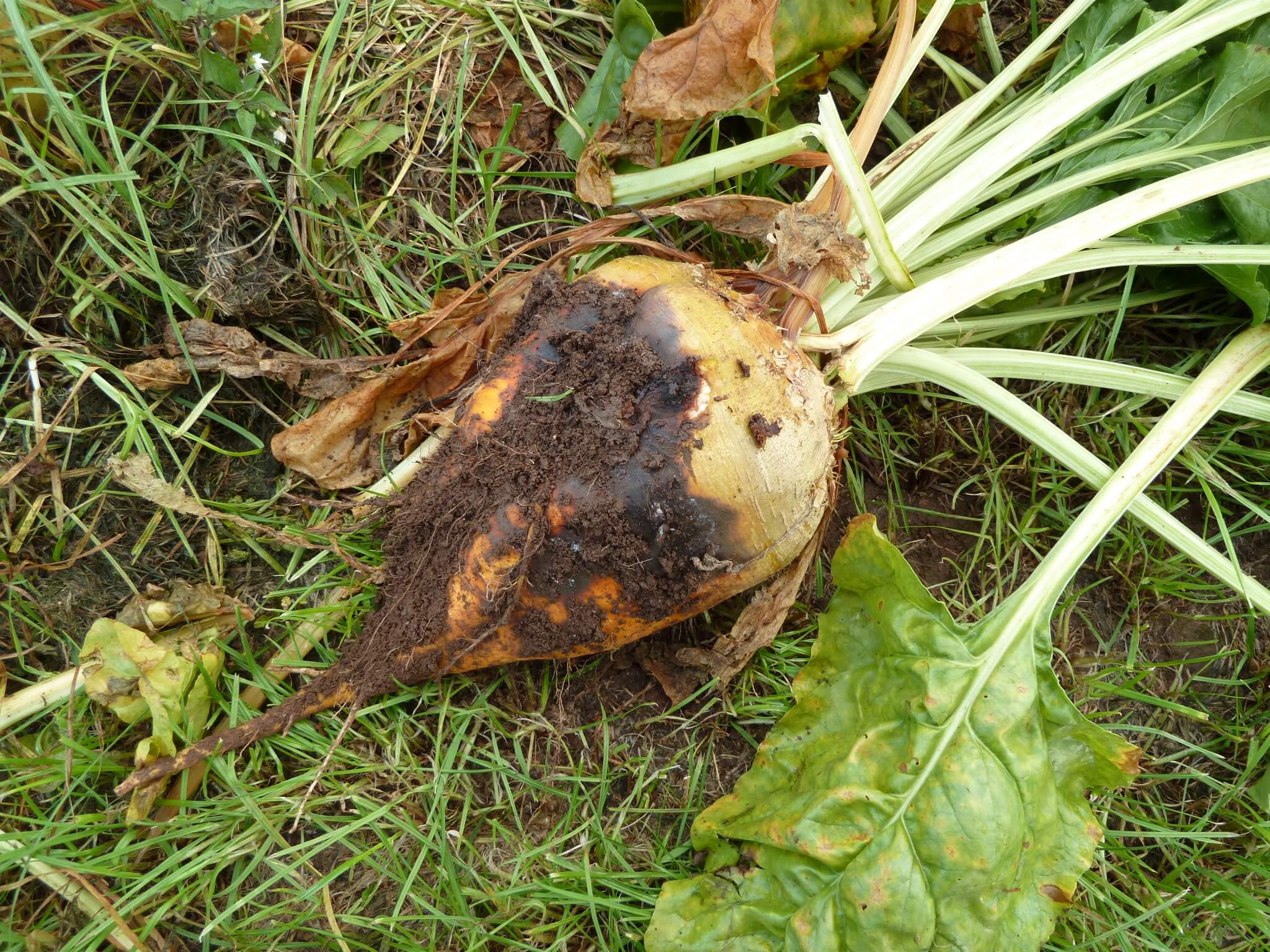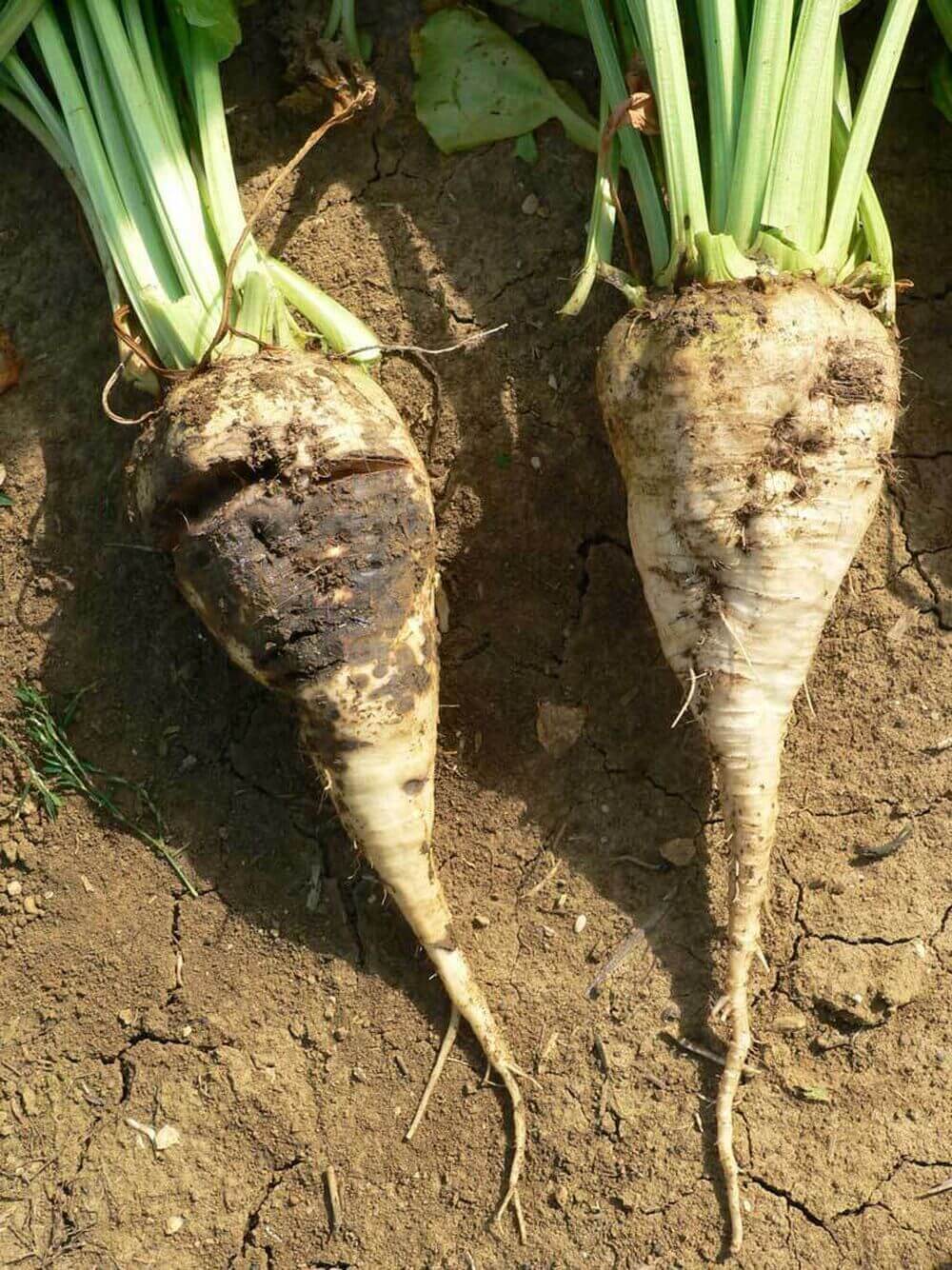
Remolacha de mesa
How to recognize and combat bad vinous in table beets
Bad Vinous
Fungus
Type:
Risk to the plant:
HIGH
Rhizoctonia Violacea
Pathogen:

Micosis/Hongos
WHO CAUSES IT?
Rhizoctonia violacea is a pathogenic fungus that causes serious diseases in various plants, including beets. This fungus is characterized by the formation of resistance structures called sclerotia, which are compact masses of purple or violet mycelium, capable of surviving in the soil for several years in the absence of a host. When environmental conditions are favorable, especially moist soils and moderate temperatures, sclerotia germinate and produce infectious hyphae. These hyphae grow and penetrate the roots and the base of the stem of the plants, causing necrosis and deterioration of the plant tissue. As the fungus develops, a visible cottony mycelium forms around the infected areas, making it easier to identify.
SYMPTOMS
Wine disease, caused by Rhizoctonia violacea, severely affects beets, compromising both their development and productivity. The disease initially manifests itself as purple Taches on the roots and crown of the plant, which expand and darken over time. These Taches are the result of the breakdown of plant tissue, which turns brown and then black as the disease progresses. Affected plants show poor growth, wilting and, in severe cases, may die.
- Purple Taches on the roots and crown
- Decomposition of plant tissue
- Darkening of Taches to brown and black
- Poor plant growth
- Wilting
- Death of severely affected plants



DEVELOPMENT CONDITIONS
Temperature:
15°C - 25°C
Humidity:
70% - 90%
HOW IS IT SPREAD?
Sclerotia in soil, contaminated tools, irrigation water, infected planting material, crop residues
HOW TO ELIMINATE IT?
Home treatments
There are no home treatments
Natural allies
Chemical treatments
There are no treatments for this disease. Treatments are directed at the insect vectors that transmit it. See insect treatments.
RECOMMENDED PRODUCTS TO ELIMINATE THE PEST
Sponsored link
Sponsored link
Sponsored link
Sponsored link
Sponsored link
Sponsored link
Sponsored link
Sponsored link
Sponsored link
Effective against all types of fungi
Sponsored link
Sponsored link
Sponsored link
Sponsored link
Sponsored link
Sponsored link
Sponsored link
REPELLENT PLANTS
RECOMMENDATIONS
















































